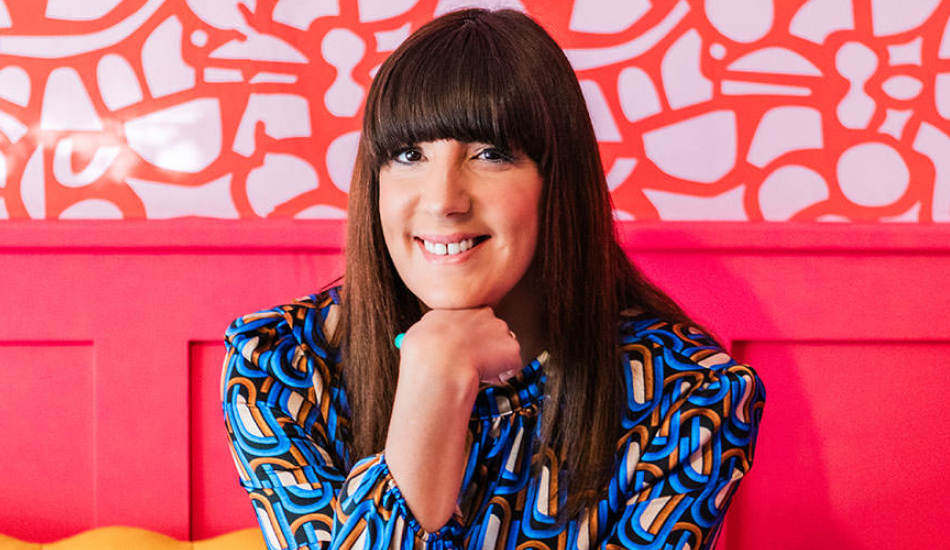Launching a product has always been a pivotal moment for any business. It’s the culmination of hard work, innovation, and anticipation. However, the landscape of product launches has evolved dramatically in recent years. Gone are the days when an evergreen content strategy and a series of automated emails were enough to captivate your audience. Consumers have changed, and so must our launch strategies.
In this guide, we’ll delve into the “new way” of launching products—a multi-tiered approach that generates warranted hype while resonating deeply with your buyer persona. We’ll explore the insights from Lisa Johnson’s “Lights, Camera, Launch” masterclass, focusing on three core elements that can transform your launch into a resounding success.
Lisa Johnson is a business strategist, public speaker, bestselling author, and podcast host. She grew her business from $30K in debt to earning multiple 7-figures in less than 4 years using the launch strategy mapped out in this article. She is also a valuable customer of Kartra, the best all-in-one marketing platform to launch and scale an online business.

The Shift from Evergreen to Engaging
For many businesses, the evergreen launch model—relying on automated processes and repetitive content—has been a staple. While it offers consistency, it often leaves potential earnings on the table. If you’ve noticed a dip in your launch performance recently, it’s a sign that consumer expectations have shifted.
Today’s consumers seek more than just promises and hype; they desire authentic connections, personalized experiences, and solutions that speak directly to their unique challenges. This shift necessitates a launch strategy that is dynamic, engaging, and tailored to diverse buyer motivations.
The Three Core Elements of a Successful Launch
Lisa Johnson identifies three pivotal elements that form the backbone of a successful modern launch: Build, Influence, and Galvanize. Each element plays a crucial role in connecting with your audience and guiding them through their buyer journey.
1. Build: Crafting the Foundation Through Storytelling
Preparation is Key
A successful launch doesn’t start on the launch date; it begins months in advance. Building involves laying a strong foundation by warming up your audience over a period of 6-12 weeks. The goal is to create awareness and interest long before the actual launch.
Storytelling and Gamification
Use storytelling to highlight the problems your audience faces, focusing on the symptoms and pain points they experience. This approach helps potential customers feel understood and seen. Incorporate gamification elements like quizzes, challenges, or interactive content to engage your audience actively.
Creating Engaging Content
Develop an offer page that speaks directly to your audience’s needs. Start a waitlist to build anticipation and exclusivity. The content during this phase should educate and inform, positioning your product as the solution they’ve been searching for. Read our blog How to Become a Successful Content Creator to learn more.

2. Influence: Building Trust and Establishing Authority
Host Engaging Events
Influence is all about public relations and establishing a connection with your leads. Hosting events—whether webinars, workshops, or live Q&A sessions—allows you to showcase your expertise and build trust.
Read this blog article to learn how to create a webinar your audience will love.
Understanding Buyer Stages
Recognize that your clients fall into different stages of readiness:
- Stage 1: “I don’t know if I can do this.”
- Stage 2: “I believe you can help me, but I’m not sure I can do it.”
- Stage 3: “I’m ready to take action but need reassurance.”
Tailor your storytelling and events to address these stages, providing the necessary encouragement and information to move them forward in the buyer journey.
Eliminating Doubt
Use testimonials, case studies, and success stories to eliminate doubt. Demonstrating real results helps potential customers envision their own success with your product. For example, at Kartra, we regularly highlight customer stories that showcase how our users have earned income online using our platform. This offers inspiration to others who are ready to achieve similar success.

3. Galvanize: Connecting and Motivating Action
Outreach and Engagement
Galvanizing is the process of exciting people into taking action, while creating a sense of urgency. To do this successfully, you’ll want to foster a community that feels like they’re on a journey together. Use gamification to make participation fun and rewarding. Encourage your audience to get involved through interactive challenges, contests, or collaborative projects.
Personalized Communication
Segment your audience and tailor your messaging to resonate with different buyer personas. This personalization increases the relevance of your communication, making your audience more likely to engage and convert.
Fostering a Community
Create platforms where your audience can connect with you and each other. This could be through social media groups, forums, or live events. A strong community enhances loyalty and encourages word-of-mouth promotion.

Understanding and Selling to Different Buyer Personas
One size does not fit all when it comes to selling. Recognizing the diverse personalities and motivations of your audience is crucial. Lisa Johnson outlines five buyer personas, each requiring a different approach:
1. The Director
- Characteristics: Detail-oriented, wants specifics on what is covered, when, and how.
- How to Sell: Provide comprehensive information, clear agendas, and detailed explanations of your product’s features and benefits.
2. The Film Critic
- Characteristics: Seeks proof of results, values credibility and status.
- How to Sell: Highlight testimonials, case studies, and any accolades or certifications your product or company has received.
3. The Lead Actor
- Characteristics: Focused on personal gain, wants to know what’s in it for them.
- How to Sell: Emphasize the end results, the speed at which they can achieve them, and the personal transformation they’ll experience.
4. The Comedian
- Characteristics: Looks for fun and enjoyment, interested in the social aspect.
- How to Sell: Infuse humor into your messaging, highlight community events, and mention any social gatherings or networking opportunities.
5. The Supporting Actor
- Characteristics: Needs reassurance, influenced by FOMO (Fear of Missing Out) and hype.
- How to Sell: Create urgency through limited-time offers, showcase community involvement, and ensure they feel part of something bigger.
Prioritizing Your Efforts
While it’s essential to acknowledge all buyer types, focus your efforts on the personas most aligned with your product and brand values. Not all customers are the right fit, and concentrating on those who will benefit most from your product ensures better satisfaction and loyalty.
Conclusion: Embrace the New Way of Launching

The success of a product launch in today’s market hinges on your ability to connect authentically with your audience. By incorporating the elements of Build, Influence, and Galvanize, and tailoring your approach to different buyer personas, you position your launch for maximum impact.
Remember, a launch is not just a moment in time but a journey that begins long before the product is available and continues well after. Invest in storytelling, build trust through engagement, and motivate your audience to take action. By doing so, you’ll not only enhance your launch results but also build a loyal customer base eager to support your brand.
Ready for your next product launch? Get started with Kartra to easily create all of the marketing you’ll need. When you pair the power of Kartra with the strategies mapped out in this blog, you’ll be set up to launch with confidence.


